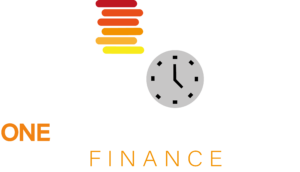Securing funding is often a crucial step for small and medium-sized enterprises (SMEs) looking to expand or meet their working capital needs. When exploring financing options, two popular choices emerge: traditional business loans and merchant cash advances. In this blog, we will compare these two options, shedding light on their differences, benefits, and suitability for SMEs.
Business Loan:
A traditional business loan involves borrowing a specific amount from a lender, which is then repaid over a fixed period with interest. This option provides SMEs with a lump sum of capital, typically used for purposes like expansion, equipment purchase, or working capital.
Merchant Cash Advance:
A merchant cash advance (MCA) is an alternative financing option where funds are provided upfront based on the future credit card sales of the business. Repayment is made by remitting a percentage of daily credit card transactions until the advance, plus fees, is fully repaid. MCAs are often used to cover immediate cash flow needs or to seize business opportunities.
Factors to Consider:
Flexibility: Business Loan: Loans offer more flexibility in terms of repayment periods and fixed monthly installments, allowing SMEs to plan their finances effectively. Merchant Cash Advance: MCAs have a more flexible repayment structure, as the amount repaid fluctuates based on credit card sales. This can be beneficial for businesses with seasonal sales variations.
Eligibility and Approval: Business Loan: Traditional loans typically require a strong credit history, financial statements, and collateral, making them more suitable for established businesses with good credit. Merchant Cash Advance: MCAs are often accessible to SMEs with lower credit scores and less stringent eligibility criteria. The approval process is usually quicker, providing faster access to funds.
Cost: Business Loan: Loans generally come with interest rates, origination fees, and other associated costs. The total cost of borrowing can be calculated in advance, allowing for better financial planning. Merchant Cash Advance: MCAs involve fees that are calculated based on a factor rate rather than interest rates. While this can be an advantage for businesses with inconsistent revenue, it’s important to carefully assess the total cost to ensure affordability.
Revenue Impact: Business Loan: Monthly loan repayments are fixed, regardless of business revenue. This stability can help businesses plan their cash flow and predict expenses. Merchant Cash Advance: Repayments are directly tied to credit card sales. During slower periods, the percentage of sales remitted can put a strain on cash flow, affecting daily operations.
Conclusion:
Choosing between a business loan and a merchant cash advance depends on your SME’s specific circumstances and needs. Consider factors such as flexibility, eligibility, cost, and revenue impact when making your decision. Traditional loans are ideal for SMEs with established credit history and predictable cash flow, while MCAs can be advantageous for businesses with fluctuating revenue and a need for quick access to funds.
Evaluate your SME’s financial situation, future goals, and repayment capabilities. If in doubt, consult with financial advisors or loan experts who can provide personalized guidance. By carefully considering your options, you can make an informed decision and secure the financing that best aligns with your SME’s unique requirements.
Remember, each SME is different, and what works for one may not work for another. Assess your priorities, weigh the pros and cons, and choose the financing solution that will help your business thrive.

